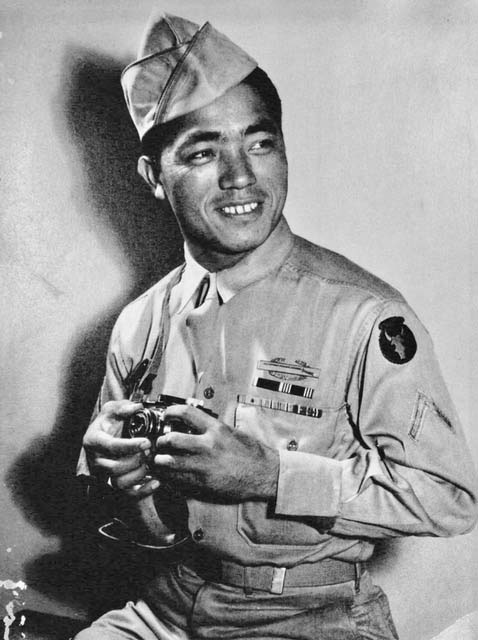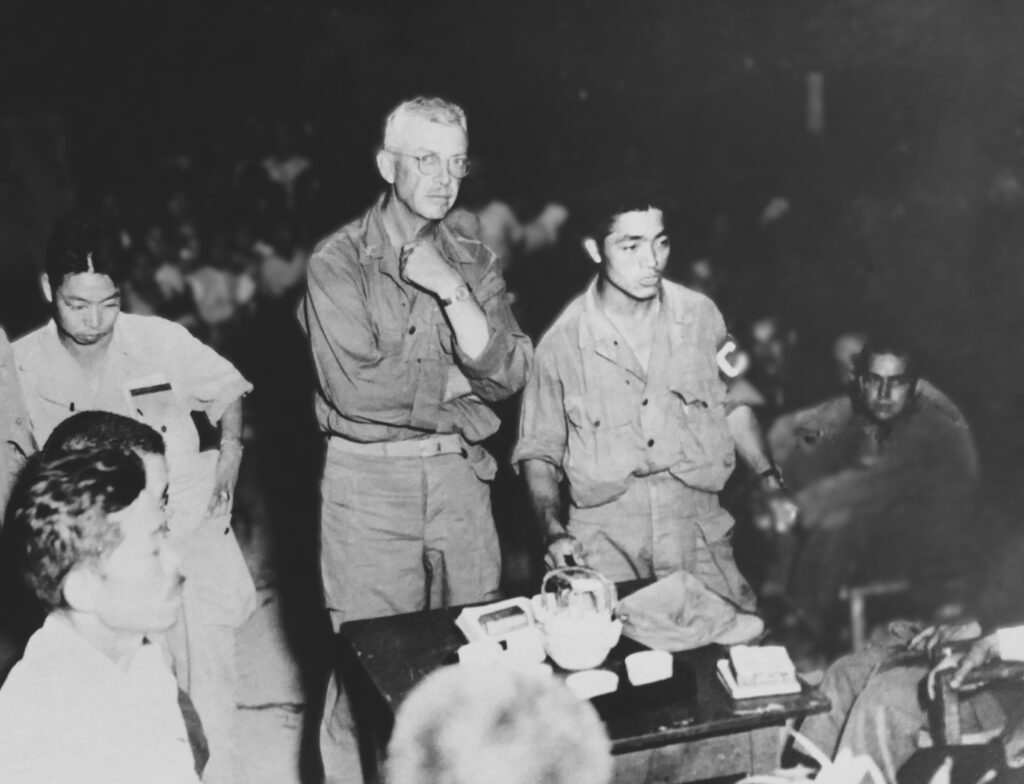Thomas Taro Higa (1916-1985) was a Hawaiʻi-born wartime Japanese-American hero with family roots in Okinawa. His life and work provide a key perspective on the history of Japanese Americans in Hawaiʻi and the United States, while exemplifying extraordinary ties between Okinawa and Hawaiʻi.

Thomas Taro Higa (1916-1985) was born in Honolulu, Hawaiʻi, to Okinawan immigrant parents Kana and Kamezo Higa. He was sent with his older brother and sister to their ancestral home in Okinawa, where he was raised by his grandparents until he was 9 years old. He returned to Hawaiʻi shortly before World War II and served in the 100th Infantry Battalion for the United States Army. He was shot and wounded in the 1944 battle of San Remo, Italy, and was sent back to the United States for medical care. Once he recovered, Higa went on a lecture tour throughout the United States, receiving support from the United States Army Relocation Authorities and the Japanese American Citizens League. Higa shared his war experience with candor and honesty, dismissed widespread prejudices, and earned respect for Japanese American troops.
When the Battle of Okinawa broke out in April 1945, Higa joined the United States military again and returned to Okinawa. Higa worked tirelessly to save the lives of locals, entering caves unarmed, and calling them to come out and surrender. Hundreds of lives were saved as a result. After the war, Higa helped with efforts to rebuild Okinawa and played a crucial role in many of the Okinawa relief projects, including sending clothes and pigs to Okinawa. In 1983, the Okinawan Prefectural Government honored Higa for his contributions to the people of Okinawa during and after World War II.
It should be noted that Higa also supported efforts to obtain naturalization rights for Japanese Americans in the United States. In 1984, Higa received a certificate of appreciation from the Japanese American Citizens League at a national convention in Honolulu, Hawaiʻi. Thomas Taro Higa offers a key perspective for understanding the history of Japanese Americans and postwar Japan-U.S. interactions. The CALL Uehiro Program lends support to the research on his life, work, and legacy in collaboration with experts from Okinawa and through the courtesy of the Higa family.

A Baptismal Ceremony amidst a flurry of artillery shells in Kitanakagusuku, Okinawa, 1945. The ceremony was conducted by Colonel Hyler (left) with Higa serving as an interpreter (right). Courtesy of the Higa family.
